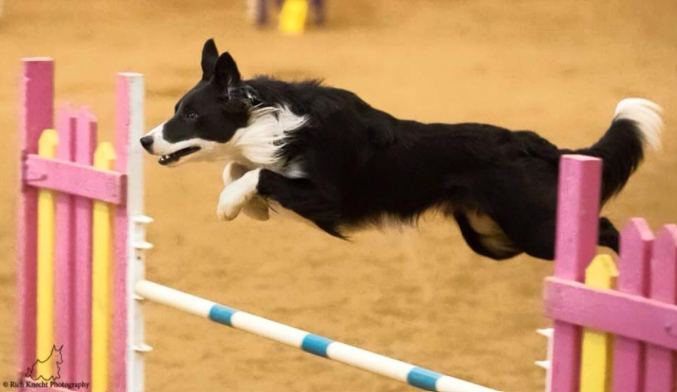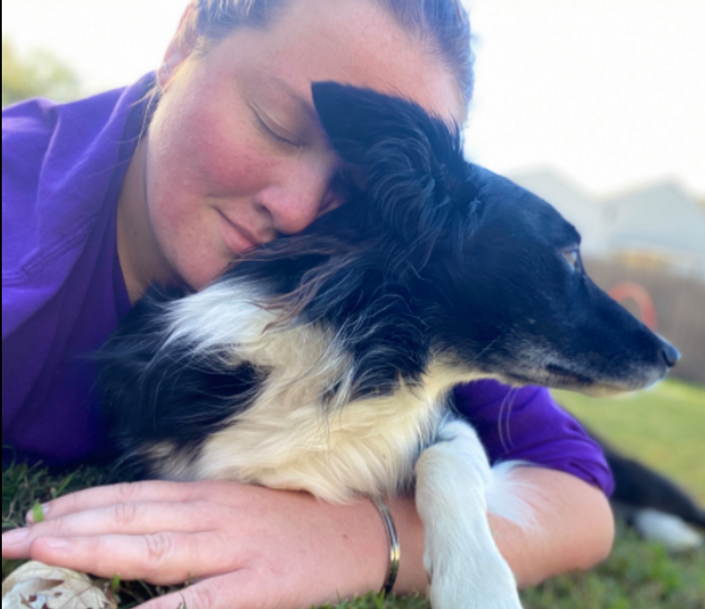
Did you know that not all dogs are natural born jumpers?
Not all dogs know how to plan a lifting point or find the correct form to arc successfully over a jump.
Even dogs who rarely knock bars can still be jumping inefficiently which can cause wear and tear on their front end over the years and tire them out faster on a course
This class is intended to provide formal jump training for your dog. It is setup with the intention of teaching a dog who has never had a formal jumping education, however it can serve as a reminder for those dogs with a solid jumping foundation. The focus of the program is the physical education of the dog on how to take jumps correctly in all different situations on an agility course.
So how do we do this? How do we help teach our dogs about jumping? That's easy! Jump grids! Jump grids allow for the elimination of the external factors of jumping (e.g. handling, speed, timing, or split focusing) and allow the dog to learn the physical skill of jumping in isolation. We will basically scale EVERYTHING back so we are isolating just the most basic jumping behavior so that the dogs, and you, can learn about what is happening with every step. This makes learning easy and exact!
As the dog improves in skill the external factors are added back in, this type of training is similar to weave or contact training. In fact the vast majority of handling is scaled back, this is skill building for the dog, not the handler. The grids used in the program were made or based on the grids created by Susan Salo.
Each week, with the exception of week 2, new jump grids will be released. These grids build upon one another to help the dogs learn basic form, lifting points, powering from the rear, turning into jumps and so much more!
Class Requirements:
A minimum of 5 jumps and maximum of 11 jumps.
Jumps can be winged or wingless, access to different types of jumps will improve the overall education of the dog (e.g. Double, Triple, Tire, Panel, Winged, and Wingless).
Space to build the grids, the minimum necessary 50' x 50' but we can probably get them smaller if need be :)
Prerequisite Dog Skills:
Targeting to a toy or food, the vast majority of rewarding will be accomplished through targeting.
Start line (Unless someone is available to hold the dog for you while you get in position to allow the dog to start the grid)
I am excited and I hope you are to! Join me!
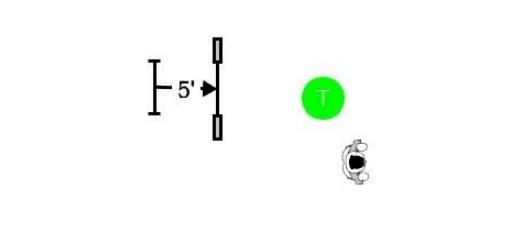
Week 1 starts with the basic yet VERY important Set Point Grid. Teach the dogs how to power from their rear, find the perfect lifting point and arc over the bar.
Weeks 2 and 3 continue with more straight line grid work.
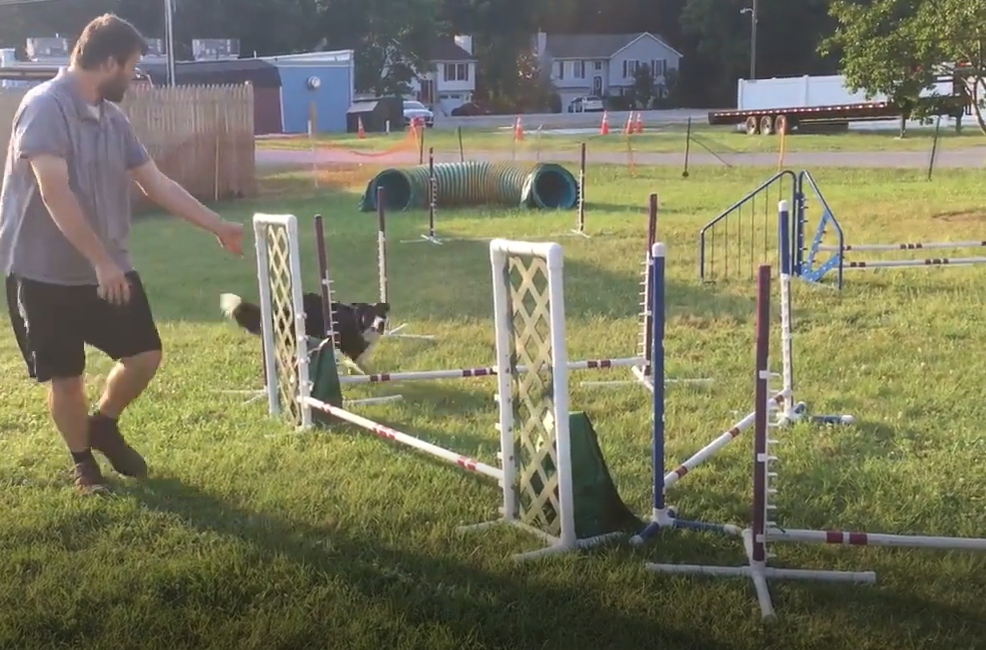
Weeks 4-6 begin introducing grids that help to teach the dogs how to prep for turning over jumps and how to read down lines of jumps.
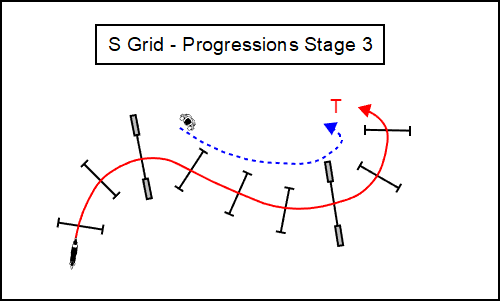
Week 7 begins to introduce the bigger grids that bring together both turning and straight lines. This brings together everything that the dogs have been working on for almost 2 months!
"Jumping is one of the only skills I think that agility has where you really have to leave the dog to their own devices. It's a hard thing to really control for them like you can contacts or even weaves. It's primarily up to them and their planning and knowledge as to whether they clear a bar correctly. That's a tough thing as a handler to deal with so I think it makes many handlers anxious."
-Erin Batchelor

Other projects by me!
There will be MANY exciting things coming to Teachable in the next few months. Here are some of them!

The world of dog sports can often be very political and hard to navigate. Accomplishments are measured against one another verses being celebrated at all levels. Don't let negativity steal your joy! Join our group today and enjoy a safe space where you and your dog can learn and share without the fear of judgement. With 500 members worldwide we are growing everyday and would love to have you! Click the link below to join the party! After all, there is nothing better than a party at The Dome!
The Batchelor Battle Dome School of Online Dog Training | Facebook
